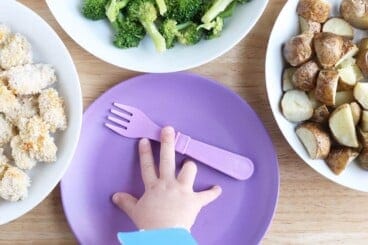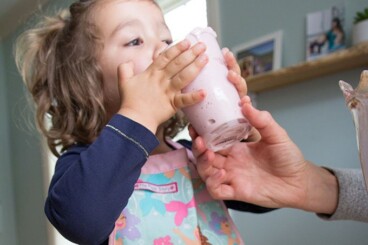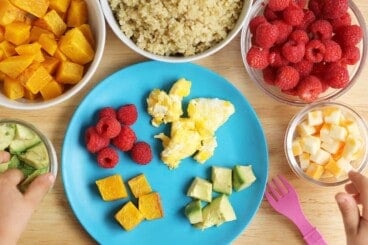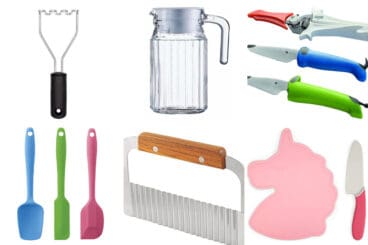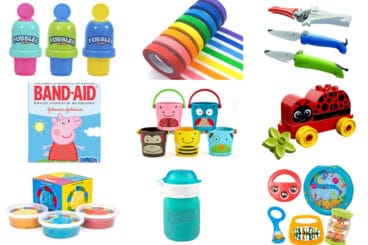Hi, I’m Amy Palanjian. I’m a recipe developer, content creator, cookbook author, and mama to three kids. Feeding toddlers is a huge challenge, and it can be so, so stressful. But I love to offer reassurance, encouragement, easy recipes, and tips that make feeding a family feel more manageable. Welcome!
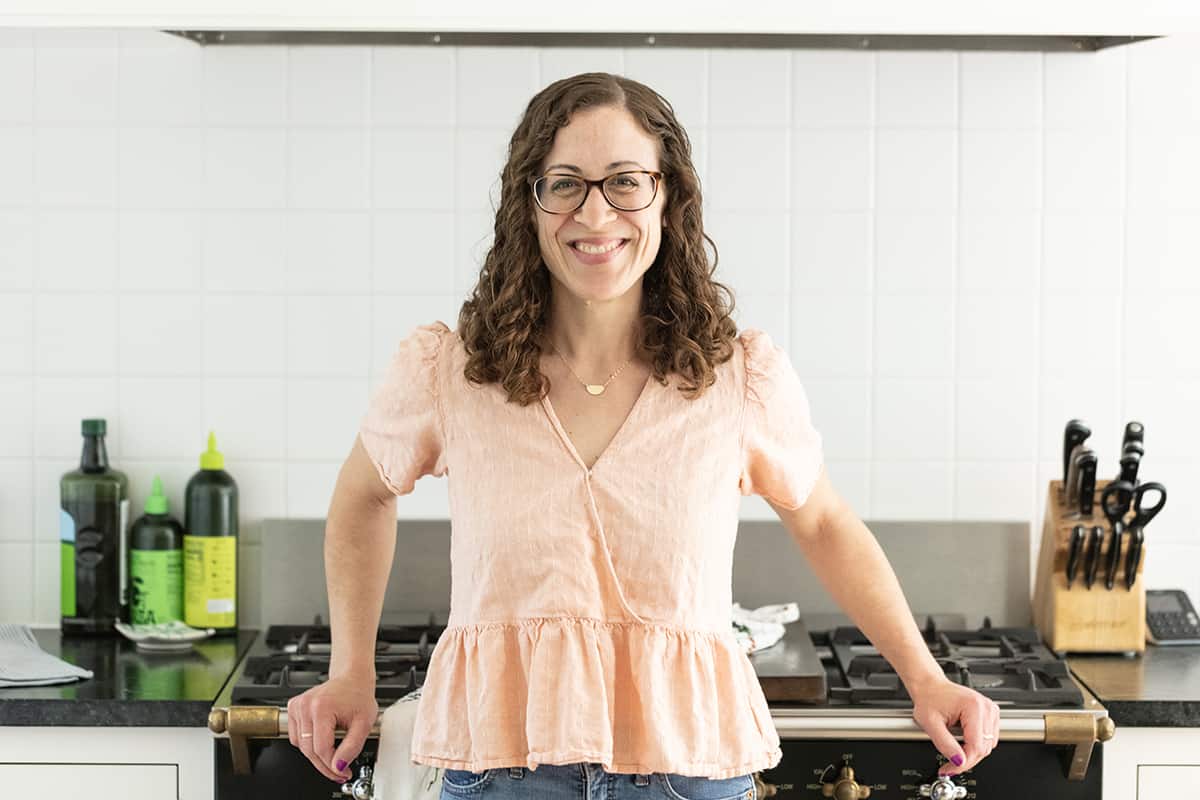
In my decade-and-a-half working in media, I’ve served as the Lifestyle Director of FamilyFun magazine, as a food editor with Better Homes and Gardens Special Interest Media, and as the Deputy Editor of ReadyMade magazine. I’ve also been a contributing editor for AllRecipes magazine. I also trained for a year in the Better Homes and Gardens test kitchen learning how to properly develop, test, and refine recipes.
I’ve been running this website for five years full-time and am also the author of the cookbooks Dinnertime SOS and Busy Little Hands: Food Play. You can find me running the YTF Community newsletter, too.
My book, Dinnertime SOS was a New York Times bestseller. It was also a Wall Street Journal best seller, a USA Today best seller, and a Publisher’s Weekly best seller when it was published in August 2023.
You can find me on social media on Instagram, Facebook, Youtube, and Pinterest.
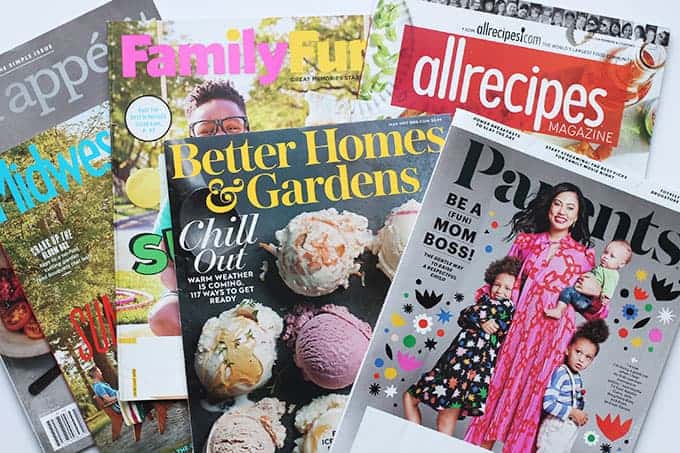
My work has appeared in Better Homes and Gardens, BHG.com, Bon Appetit, Delicious Living, Do It Yourself magazine, HGTV magazine, The Kitchn, Momtastic, Mother.ly, Parents, Parents.com, Real Simple, Super Healthy Kids, Rachaelraymag.com, The Today Show, The Wall Street Journal, Wellmark.com, The Honest Company website, and more.
As Featured In














I’ve appeared as an expert on the Tamron Hall Show, CTV Your Morning, Hello, Iowa on WHO13, and have been on podcasts including Food Blogger Pro, PedsDocTalk, Mindful Mama, Minimalist Moms, Baby-Led Weaning Made Easy, Food Heaven, Didn’t I Just Feed You, Crunchy Cocktail Hour, Burnt Toast, my own Comfort Food podcast, and more.
I’ve been profiled in the Christian Science Monitor, quoted on People.com talking about family dinners (and how to make them work when they aren’t going so well!), on The Sun sharing one of my favorite lunch ideas, on Slate talking about the cost of food we buy for our kids, on the Today Show with one of our favorite pancake recipes, and on Parents.com, where I shared my favorite pantry staples. I was also featured in the Rachel Ray Magazine sharing time-saving tips for parents.
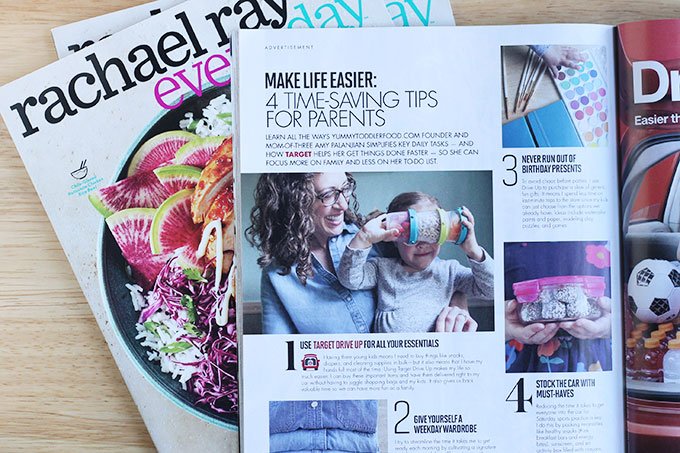
I’ve also developed recipes and content for a number of clients including Nellie’s Free Range Eggs, Skeeter Nut-Free, Kalona Organics, the Paw Patrol Movie, Dr. Seuss, Godiva, Horizon Organics, Crystal Farms Cheese, Lalo, Colavita, Barilla, McCormick, PUJ, Reynolds, Danone, EveryPlate, Mission MightyMe, Happy Family Organics, Amara Organic Baby Food, and many more. I’ve even worked on videos for Better Homes and Gardens! (My job is really super fun!)
I was chosen by New Hope Network as a featured influencer in their inaugural list of Top 100 Responsible Health & Wellness Influencers of 2020. I love helping families find an easier way to enjoy wholesome, delicious meals together.
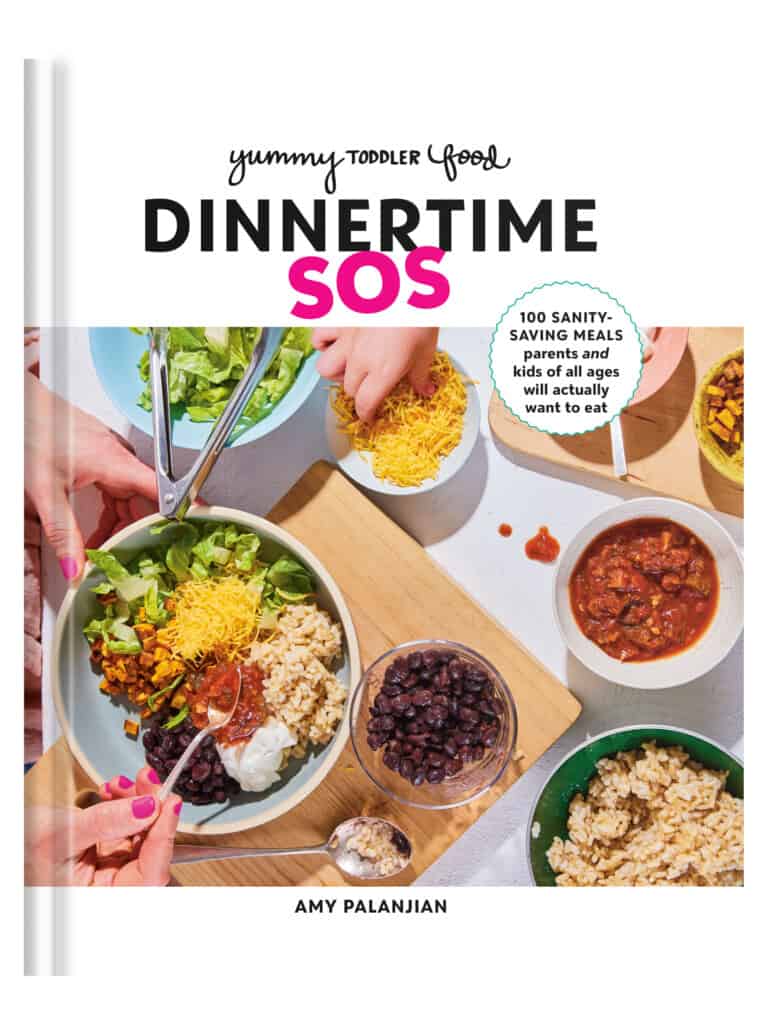
Get My Book
Dinnertime SOS
100 Sanity-Saving Recipes Parents and Kids of All Ages Will Actually Want to Eat!
Below I’m going to share more about how I approach feeding my family—and develop the recipes and advice you’ll see here on Yummy Toddler Food.
And if you’re new here, you can start with my top ten most popular recipes:
- Spinach Banana Muffins
- Pastina Soup
- Green Pasta Sauce
- Breakfast Bars
- Mini Banana Muffins
- Pumpkin Bars
- Spinach Banana Pancakes
- Cauliflower Mac and Cheese
- Banana Oatmeal Bars
- Salt Dough Ornaments
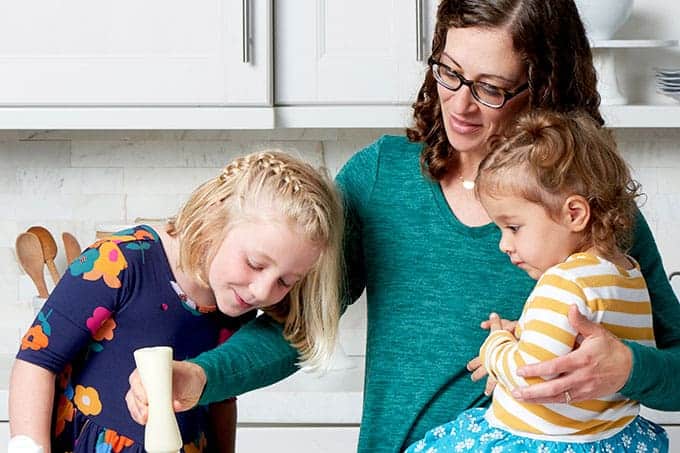
I stock my pantry, fridge, and freezer with whole foods as much as possible—but I also fully acknowledge that reality requires shortcuts.
Most of the time, I cook with whole ingredients at home. Stocking my pantry with basic ingredients including whole grains, dried beans, and a wide range of flours allows me to stick to my monthly grocery budget, and it gives me greater control over what we eat—I can add spices, fats, and flavorings according to the preferences of my family.
But I regularly buy jarred pasta sauce, simmer sauces, frozen veggies, canned fruit, and all sorts of other shortcut foods.
I opt for whole dairy products because I prefer the flavor and think they perform better than fat-free versions in most recipes, especially toddler and baby food which benefits from the richness.
And I find it fun to make homemade versions of items you’d usually buy in the store, so you will find recipes for staples including Whole-Wheat Bread, Hummus, Cheese Crackers, Chocolate Milk, Homemade Granola Bars, and more—but that doesn’t mean I don’t also value the convenience of store-bought versions. (My kids love Goldfish crackers and applesauce pouches!) I certainly don’t have time to scratch-bake crackers every day and I don’t imagine you do, either.
I am a mother of a toddler with autism and a psychologist who works with children on the autism spectrum. A large percentage of the clients I work with have food aversions including my son. I have been feeling so discouraged before finding your blog on recipe ideas. I just wanted to say thank you so much! —Sue
I believe it’s possible to raise kids who like all kinds of food—Goldfish crackers and broccoli, ice cream and smoothies, chicken nuggets and homemade stir-fry. The key for me is presenting these foods without pressure, restriction, or comments, and surrounding them first and foremost with the foods we want them to eat. We get to decide which foods we bring into our homes. Keep reading for more on how this works.
Featured Media
Cook It!: Creations from the Dr. Seuss Cookbook for Kid Chefs
Watch us cook from this cookbook as part of their launch campaign.
I minimize added sugars in my recipes—but I do not stress about sugar in the big picture.
My goal is to raise kids who are able to eat a whole range of foods and who are able to tap into their hunger and fullness. I do not want them to fear or have guilt from any particular food, so I do not label desserts or treats as “good” or “bad,” and I do not worry excessively about sugar.
I have found it’s very possible to bake delicious cakes, cupcakes, and muffins with lower added sugar and allow all of the flavors and textures to shine through. So while I often use fruit to lend sweetness to toddler foods, I also use modest maple syrup, honey, and yes, even real sugar, in dessert recipes.
I involve the kids in the kitchen (but not all the time!).
I don’t go full Montessori-style every day (I don’t always have the time to let the kids do everything on their own, even though I do see the value in that approach), but I’ve found that having the kids help me get a meal ready or bake a special recipe makes them more interested and involved. And often they nibble on veggies as they help, even if they don’t eat them at the table, which I consider a huge plus.
Cooking together is an activity that we all love, so we do it regularly. We have a learning tower in our kitchen and more often than not, at least one of my kids is in there with me while I’m making meals.
I just wanted to thank you for keeping it real. I don’t follow many moms/bloggers other than my family and friends because I don’t want to fill my feed with ‘fake.’ But I love your ideas and appreciate your posts! —Samantha
I am not a short-order cook, and I prioritize family meals.
My family eats breakfast and dinner together 99% of the time. Which, yes, does mean that we eat dinner at 5:30. I do my best to serve a variety of foods—whether the kids say they like them or not—so that we don’t get stuck eating the same few foods over and over. When I make a new or unfamiliar food, I always try to pair it with something I know they usually like.
Or, at the very least, have cheese, crackers, or fruit on the table so there’s something “safe” to eat.
I do not cook separate meals except on very rare occasions. We are incredibly fortunate that none of our kids has had an issue with growth, allergies, or appetite (apart from during illnesses). I do have good friends with kiddos who have those issues, though, and I know they are quite common, so you may see the topics addressed.
I believe it’s possible to cook one family meal and adjust it for everyone at the table as needed, which you’ll see reflected in modifications I offer in recipes. I also realize that feeding a family is a LOT of work and that it’s a very smart idea to take shortcuts where you can.
This is the best page for mothers of toddlers ever. Thanks for being so real and not making the guilt even worse! —Andy
Mealtime is as drama-free as possible (which is not to say it’s totally calm).
I meal-plan and post the week’s menu on a dry-erase board in our kitchen so everyone knows what’s for dinner. And I follow this advice called The Division of Responsibility in Feeding from feeding expert Ellyn Satter: “The parent is responsible for what, when, where. The child is responsible for how much and whether.”
No forcing bites. No making anyone feel bad if they don’t like something, no taking it personally if they decide not to eat something that it took me hours to make.
I trust that my kids are in tune with their hunger and that their intake will balance itself out over the course of any given week. We don’t talk about “good” foods or “bad” foods, but I focus on flavor and how more wholesome foods will help them grow and run fast (or twirl like a ballerina, depending on the day).
Some meals are better than others, some meals are loud and chaotic because life with kids can be that way!
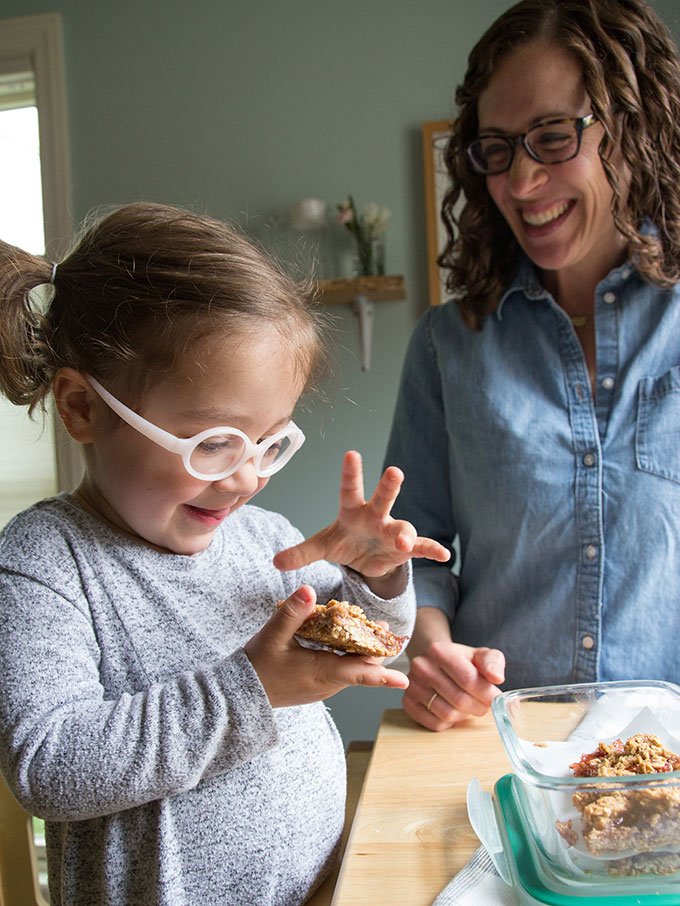
I am aware that toddlerhood has particular challenges.
It takes time for kids to learn how to chew, so little kids need a lot of time to learn how to eat—and we need to be mindful of choking hazards throughout childhood. Making food easier to eat for this age is always at the front of my mind when I’m developing recipes, sharing advice, and taking photos. But I also really try to make the food I share enjoyable for older kids and adults at the table, too, to maximize your time in the kitchen.
I also know that little kids go through a normal phase of “picky eating” of being more fearful of new foods, and I try to reassure and guide families through that stage…because it can be a real challenge!
In normalizing the struggles, I hope to help families have happier meals, no matter what the kids may eat or not eat—because meals are about much more than just nutrition.
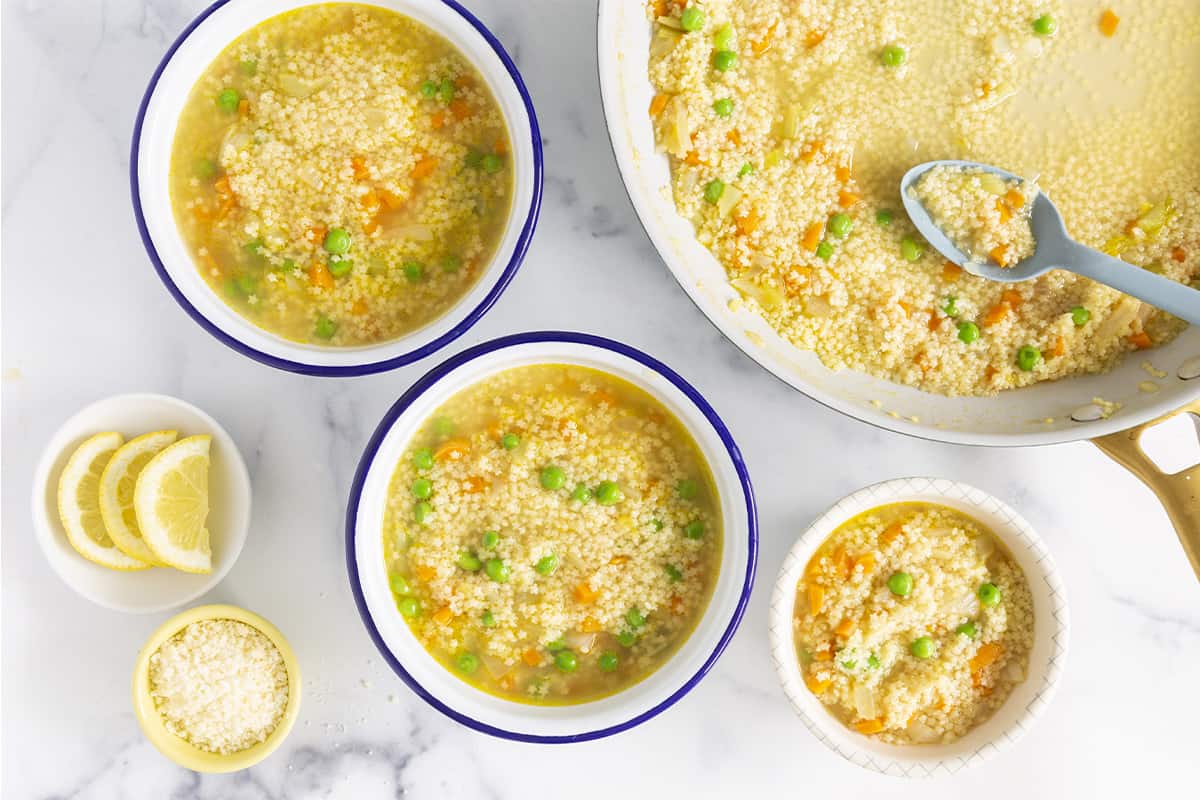
I test and retest my recipes.
I have three very opinionated taste testers (as well as many friends who regularly enjoy the surplus of what I make), so you can be sure everything is being well vetted, tested, and retested when necessary. I also know it’s hard to feed kids, but even more so when you’re dealing with a food allergy or intolerance, so I try to offer allergy-free options when I can.
(Find my Top Kid-Friendly Recipes and Cold Lunch Ideas. You can search my Full Recipe Index, too.)
I just have to take a moment and thank you so much for your blog! I use it *regularly* to prepare food for my little one. (and myself and my husband!) Thank you so much for sharing. —Lane
The result? I have a house of enthusiastic eaters.
My kids 100% do not eat everything I make or serve them, but they are generally happy eaters. One loves toddler smoothies, the other has never had more than a sip in her life, the third is hit or miss. Two love meat, the other could take it or leave it…and usually leaves it. They are unique and opinionated, just as I expected them to be! And all still make a total mess at the table, and I consider myself lucky to get to clean up after them—and am also amazed how often I find myself sweeping the kitchen floor and running the dishwasher!
I love to help families figure out how to approach toddler food when challenges arise.
This age offers up a whole host of issues to work through, and it often leaves parents feeling like they’re failing. You’re not! This is hard because it’s actually hard, so never feel like you’re doing something wrong. There’s a lot we can do to create a foundation for happier meals that has nothing to do with the food, so hang in there and consider starting with these posts:

